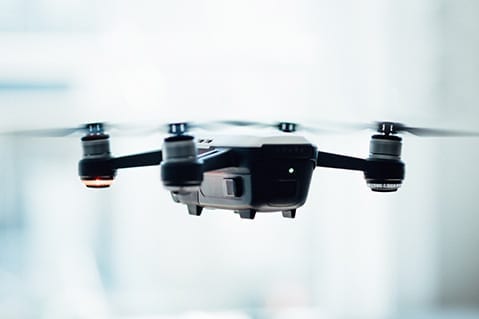
Technology is constantly changing the way people shop, especially during the COVID-19 pandemic. These shifts in consumer behavior are having a profound effect on store design in both grocery and c-stores.
Adaptable retailers stand to reap long-term benefits. Layout and design changes can make a significant impact on shopping behavior and your store’s bottom line. These adjustments don’t have to be dramatic to be effective. Learn how retailers can implement tech-informed design changes to help their stores thrive in 2021 and beyond.
E-Commerce Brings Focus to Store Exteriors
Due to the growth of e-commerce during the coronavirus pandemic, a good first step is to rethink the areas outside your store. Look to carve out ample space for motorists and pedestrians to pick up online orders. This could mean blocking out additional room for drivers to retrieve their orders and creating a designated section for people to queue up on foot.
What’s more, technology now allows for even more creativity in the BOPIS realm. Retailers can build high-tech, high-volume pickup stations near their storefronts. These include staging facilities, walls of lockers, order retrieval towers that function like vending machines, and drive-throughs.
In fact, pandemic-fueled online shopping is turning the drive-through window into a design staple. Retailers can add these low-contact pickup points to fulfill almost any kind of online order. A pharmacy window might multitask fulfilling BOPIS grocery and sundry orders. Grocers may even consider building an additional window into their store design to meet this increase in atypical drive-through demand.
Don’t forget that your storefront encourages people to come inside to shop, and that still matters. Exterior design elements like lighting, graphics, visual merchandising, and custom displays around the exterior and at the entrance enhance curb appeal and can help inform shoppers of sales and more, encouraging in-store shopping.
Signage, both exterior and interior, plays a key role in helping pandemic shoppers navigate your retail space and feel safe as they do so. Customer path revisions may need to start outside the store, and lead the way inside.
How Tech Trends Influence Retail Interiors

Interior design in 2021 is all about enhancing the “click and mortar” experience for your customers. E-commerce has become the norm and shoppers demand its convenience even in retail settings. Here are some ways you can use tech-informed design to meet these shifting consumer needs.
Apps
Retailers like Walmart use decor in their store design to reinforce their apps. Signage incorporates the app’s logo, typeface, and colors. Store section signs reflect the simple navigation cues seen on a mobile device. All of this reminds shoppers to download and utilize the retailer’s app.
Bots and Drones
Drones fly overhead and assess inventory. Chatbots direct in-store shoppers to find desired items. Data from these devices can be analyzed to reveal what items consumers want most, in a process known as machine learning. Retailers can use this information to display those high-demand products in parts of their stores where they gain more visibility and thus increase sales.
Shelving
Sensors and RFID tags can detect when shoppers pick up an item off a store shelf. This helps retailers track inventory and keep high-demand products in stock. Those same shelves might also feature electronic LED displays along their edges, scrolling user reviews and other product information that influences shopping decisions. Grocery and c-store retailers can add these features to existing store shelves, bumping up the value of a potentially overlooked space.
How Important is Contactless Checkout at Grocery and C-Stores?
Due to the pandemic, 87% of shoppers prefer stores with contactless or self-checkout options. Retailers can adapt store layouts to meet these demands. For instance, removing checkout lines that require cashiers and baggers and replacing them with self-checkout stations helps your store appeal to customers wary about the safety of face-to-face interactions. Customer path adjustments help them find their way to these new options while remaining socially distanced.
Some stores are going one step further and offering mobile self-checkout, so shoppers can pay using their phone as they leave the store. Walmart and Target employ sales staff to manage sales on the floor. Employees carry handheld scanners so shoppers can checkout wherever and whenever they’re ready.
These changes are leading to store designs with less emphasis on traditional checkout, instead shifting toward digital payments. An experienced environmental design firm can help you seamlessly implement interior and exterior design solutions that support tech-influenced shopping behaviors.
King Retail Solutions Provides Tech-Informed Retail Design
Look to King Retail Solutions to handle every step of your project. From design to fabrication to installation, we are your full-service retail interior and exterior experts. Check out our work and contact us to see how we can help your store adapt to meet new buying behaviors.
Summary
Technology continues to reshape retail environments, influencing how stores look, function, and interact with customers. From e-commerce-driven exteriors to touchless interiors and AI-powered inventory management, these innovations are redefining store design for efficiency, safety, and engagement. Retailers that integrate tech-informed design elements today will be best positioned to meet evolving consumer expectations tomorrow.
Key Takeaways
- E-commerce growth is transforming store exteriors with pickup areas, lockers, and drive-through windows.
- Retail interiors now blend digital and physical experiences through apps, drones, and smart shelving.
- Contactless checkout options and customer path redesigns enhance safety and speed.
- Visual design elements, both inside and out, play a key role in reinforcing brand connection and driving engagement.
Frequently Asked Questions
Q. How is technology changing modern store design?
A. Technology influences both the exterior and interior of retail spaces—from digital pickup areas and interactive displays to smart shelving and mobile checkout systems—creating seamless, customer-focused shopping experiences.
Q. Why are contactless checkout options so important?
A. Contactless and self-checkout options have become essential since the pandemic, with most shoppers preferring faster, safer, and more independent ways to complete purchases.
